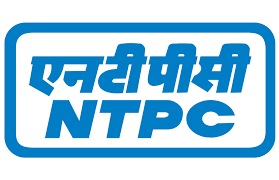YOGA SIGNIFICANTLY REDUCES BLOOD PRESSURE IN PRE-HYPERTENSIVE: SGRH STUDY
A recently published study (Full text attached), in Journal of Hypertension – October 2018 edition, conducted by researchers from Department of Neurophysiology, Sir Ganga Ram Hospital, New Delhi has found that six months of Yoga lifestyle intervention produces modest but clinically meaningful reductions in 24 hr ambulatory Systolic Blood Pressure (Upper level BP) and Diastolic Blood Pressure(Lower level BP).
This study is a randomized study of 120 patients to study the effect of Yoga lifestyle on Ambulatory Blood Pressure in patients with high normal blood pressure (Prehypertension). The patients were divided into two groups. Patients in Group A (Yoga), were assigned to practice yoga – an intensive lifestyle modification, while patients in the Group B (Conventional), were prescribed the conventional lifestyle modifications (exercise, diet, smoking cessation).
According to Dr. Nandini Agarwal, Author of the study from Department of Neurophysiology, Sir Ganga Ram Hospital, “24 hour diastolic BP particularly the night diastolic and mean arterial pressures showed a significant decrease from the baseline in the Yoga group compared to the conventional group who underwent lifestyle modifications at 12 weeks. This study has convincingly demonstrated that yoga intervention in patients with prehypertension can significantly reduce blood pressure”.
According to Dr. M. Gourie Devi, Chairperson, Department of Neurophysiology, Sir Ganga Ram Hospital,“Hypertension is a major public health problem throughout the world with over one in five adults affected worldwide and this is likely to increase to 29.2 % by 2025. The absolute prevalence of hypertension in economically developed nations is 37.3% as compared with 22.9% in the developing countries. Though the prevalence of hypertension is widespread, a significant proportion of patients have mild hypertension or high normal blood pressure (pre-hypertension). Prehypertension is a precursor of clinical hypertension and is closely related with the increased incidence of cardiovascular and cerebrovascular (stroke0 diseases Hypertension along with other risk factors including diabetes, overweight and smoking contribute to the occurrence of heart disease and cerebrovascular accidents (stroke). Through interventions including yoga and medications (when necessary) hypertension can be controlled with consequent reduction of serious and disabling paralysis.
According to Dr. Sandeep Joshi, Author of the study, “Patients with Prehypertension (120 – 139 / 80-89 mmHg) have an increased risk of cardiovascular morbidity and mortality compared with patients who have normal blood pressure (< 120 / 80 mmHg).Reducing systolic blood pressure by just 3 mm Hg in the general population has the potential to reduce stroke mortality by 8 % and coronary artery disease mortality by 5 %. Yoga, a mind body technique, has been shown to be an excellent method of relaxation and stress control.”
The yogic practices that were followed in the study are as follows:
1. Health rejuvenating exercises – These were performed during warming up and to prepare for the next step i.e. Asanas.
2. Asanas – These are the yogic postures and exercises mainly aimed at stretch relaxation. A number of aasanas were taught, including Surya Namaskar, Tadasana, Padahasta asana, Vajrasana, Shasanka asana, Ardha-matsyendraasana, Paschimottantasana, Bhujangasana, Dhanush ban asana, Shalabhasana, Uttanpadasana, Merudandasana, Pawan muktasana, Sarwangasana, Matsyasana, Ardhamatsyasana. The details of these asanas can be found in standard texts on yogic exercises.
3. Breathing exercises (Pranayama) (Anulom Vilom – alternate nose breathing, Nadi Shodhan pranayam).
4. Relaxation exercises (Kayotsarg or Corpse postur).
5. Meditation (Preksha dhyana).








